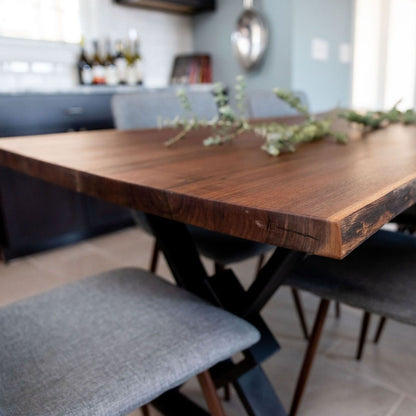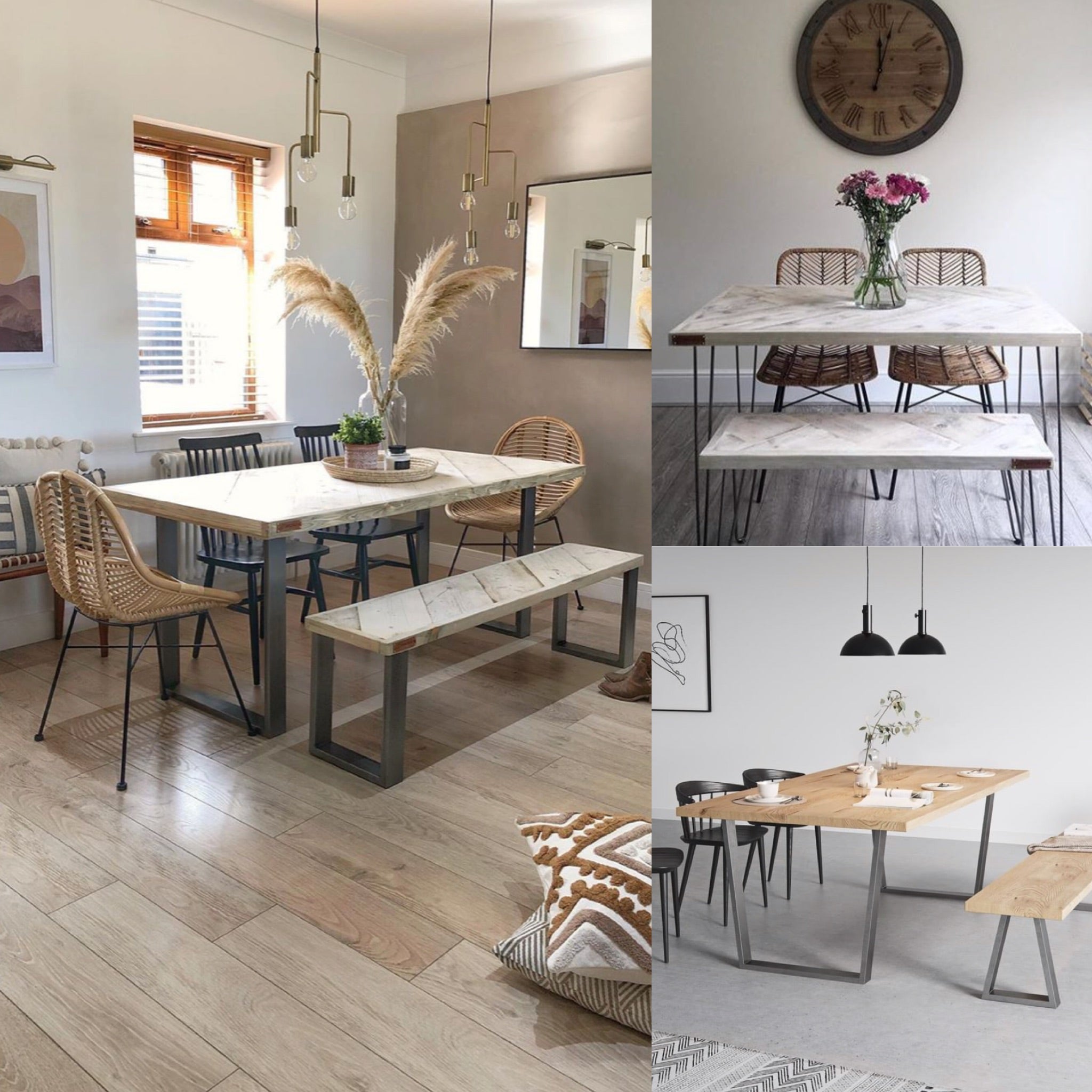Exactly How to Choose the Perfect Eating Space Table Legs for Your Home Decor
Selecting the optimal dining-room table legs is a nuanced process that calls for careful consideration of different elements, including your area constraints, aesthetic preferences, and functional demands. The interaction in between styles, measurements, and products can considerably influence the atmosphere of your dining location, making it important to approach this decision systematically. As you consider the myriad alternatives offered, it becomes clear that the right selection prolongs beyond mere appearance; it can boost your overall eating experience. What elements should you focus on to ensure your selection enhances your home's distinct personality?
Assess Your Dining Room
Assessing your eating room is essential for choosing the right table legs that enhance both looks and functionality. Begin by determining the dimensions of your eating area, consisting of ceiling height, flooring area, and closeness to other furnishings. This info will help establish the appropriate size and height of your dining table, which straight affects the choice of table legs.
Next, consider the style and format of your eating room. An open-concept style might benefit from table legs that offer aesthetic agility, such as slim steel or acrylic alternatives. Alternatively, an extra standard setup may require durable wooden legs that provide a feeling of durability.
Examine the existing color combination and materials in your eating location. Harmonizing the table legs with these elements produces a natural appearance that enhances the total decoration. Additionally, consider the performance needed in your area. As an example, if you regularly hold big gatherings, consider legs that give extra assistance and security.
Eventually, a thorough analysis of your eating area will direct you in making a notified choice, guaranteeing that your table legs not only enhance the aesthetic charm however likewise serve practical objectives.
Consider Your Design Preferences
When selecting dining-room table legs, it is vital to review your personal design preferences, as they considerably influence the general aesthetic of your eating area. Your option of table legs can either complement or comparison with existing design, making it essential to align them with your recommended indoor layout style.
If your home leans towards a modern-day visual, take into consideration smooth steel or minimalist wood legs that supply a clean, minimalist appearance. For a more traditional strategy, elaborate wood legs with elaborate makings can add a touch of elegance and class. Industrial styles gain from robust, resources such as redeemed timber and metal combinations, showing a rugged charm.
Furthermore, farmhouse and rustic designs usually favor tough, beefy legs that evoke a sense of heat and convenience. Conversely, if your decoration is eclectic, you may pick non-traditional shapes or a mix of products to produce aesthetic interest.

Evaluate Material Options
The option of product for dining room table legs plays a pivotal duty in both resilience and visual appeal. Typical products consist of wood, metal, and composite alternatives, each offering unique features that can affect the total appearance and longevity of your table.
Timber is a traditional selection, recognized for its warmth and versatility. Hardwoods like oak and walnut give phenomenal strength and can be completed in numerous discolorations to match any type of design. However, softwoods like ache are extra susceptible to damages and scrapes, making them less perfect for high-traffic locations.
Steel legs, typically crafted from steel or aluminum, exhibit modernity and industrial appeal. They are very long lasting and resistant to wear, making them suitable for family members with kids or frequent events (dining room table legs). In addition, steel can be completed in different shades, boosting the modification possibilities
Composite products, such as MDF or laminate, deal affordability and diverse layouts. While commonly much less resilient than strong timber or steel, they can still offer a fashionable appearance and are frequently simple to preserve.
Ultimately, the material you choose need to line up with your way of living, visual choices, and the level of use your table will experience.
Determine Elevation and Dimension
Choosing the ideal elevation and Click This Link dimension for your dining area table is important for both capability and convenience. The standard elevation for dining tables generally varies from 28 to 30 inches, allowing enough legroom for most individuals when seated. It is vital to take into consideration the measurements of your dining room and the types of chairs you prepare to utilize.

Moreover, consider the percentages of your dining-room. A larger table in a large location can create a grand ambiance, while a smaller sized table works well in even more intimate setups. Ultimately, the ideal height and size will integrate with your general decoration and improve the dining experience for you and your visitors.
Explore Customization Opportunities

Additionally, the design of the legs can be personalized to fit various designs, such as rustic, modern-day, or industrial. As an example, tapered legs can evoke a mid-century contemporary feeling, while beefy, block-style legs might reverberate with conventional or farmhouse decor.
Home owners can likewise discover color coatings, from all-natural timber discolorations to repaint, enabling them to match or comparison with the tabletop and bordering design.
Furthermore, leg elevation can be changed to accommodate details seating plans or personal choices, enhancing both convenience and functionality.
Last but not least, special embellishments, such as carvings or attractive brackets, can better customize the table legs, making the dining experience not simply a declaration yet a dish piece in the home. By considering these modification options, house owners can create a dining-room table that really mirrors their uniqueness.
Verdict
Choosing the ideal eating room table legs needs careful factor to consider of numerous aspects, including the measurements of the dining room, style preferences, product sturdiness, and wanted height. Modification choices even more boost the capability to attain a cohesive visual that enhances the overall decoration. By methodically assessing these aspects, homeowners can guarantee that the chosen table legs not only accomplish functional demands yet additionally contribute positively to the dining experience and ambiance of the home.
Choosing the suitable eating room table legs is a nuanced procedure that requires cautious consideration of numerous aspects, including your area restraints, aesthetic preferences, and functional demands.Analyzing your eating space is vital for picking the right table legs that complement both looks and capability.When determining size, measure the area where the table will be put to guarantee it fits easily, enabling for at least 36 inches of clearance around the table for easy movement. A bigger table in a sizable area can develop a grand atmosphere, while a smaller sized table functions well in more intimate settings.Selecting the perfect dining room table legs requires careful consideration of various elements, consisting of the dimensions of the dining room, design choices, product toughness, and preferred elevation.
Comments on “How to Choose the Perfect Dining Room Table Legs for Your Home”